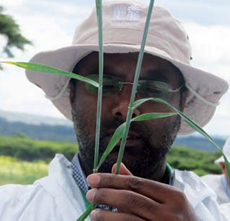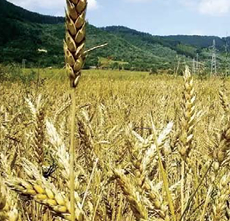Wheat farming: Costs and profits per acre in Kenya
 Farmers in Kenya are very enterprising and hardworking people. This explains why there are numerous different projects that people are willing to try out.
Farmers in Kenya are very enterprising and hardworking people. This explains why there are numerous different projects that people are willing to try out.
Wheat farming in Kenya is one of the most lucrative farming ventures that any farmer can undertake especially if they have large tracks of land. The following is a guide on how you can engage in wheat farming and make profits out of it. After all, wheat is the second cereal crop that is most consumed in Kenya after maize. Its economic significance can therefore not be ignored. With proper management, it is possible to reap great benefits from the wheat farming business in Kenya.
Understanding wheat production in Kenya per acre
For optimal production, you need to understand the conditions that promote growth. Those doing large scale wheat farming in Kenya have understood what it takes to be a success.
Favourable wheat growing conditions in Kenya
Gently sloping land that allows for mechanization. Wheat requires a lot of machine farming to be successful
- The right altitude for growing wheat ranges from 1500 -2900mm. This is a perfect altitude especially because it helps in disease reduction
- Wheat requires moderate rainfall which should be from 500mm to 1270mm.
- The temperatures should be between 15 degrees to 20 degrees especially for the first three months which will promote growth and maturity.
- The soils that support wheat farming are deep volcanic soils that are well drained
- After the first three months, wheat require dry, sunny spells that will promote ripening and harvesting
Understanding the cost of wheat farming in Kenya
The fact that you are doing wheat farming as a commercial farmer means that you must put into consideration all the production costs involved from the time you plant harvesting. It is crucial therefore to know how much you will need to make this project a success. You have to buy inputs and will incur other expenses. If you are leasing land, start your calculation from the costs of leasing land which would be about Ksh.3200 in a wheat growing area such as Narok. Ploughing cost would be Ksh.1500 an acre, Ksh.1200 for harrowing, Ksh.2000 fertilizer, Ksh.3000 for chemicals, and Ksh.1500 for harvesting costs.
Planning for such costs would work excellently for you. You do not have to worry about harvesting fees because this will be paid by the companies coming to buy the wheat while still on the farm. Wheat and barley farming in Kenya has grown because of the demand for these products. Companies are always on the lookout for farmers that have the products in bulk, therefore, the market will not be an issue. In fact, for wheat, the government buys from its farmers at a reasonable price per bag with last season going at Ksh.3400 per 90kg bag. With an estimate of 12 bags per acre, a farmer is able to calculate their potential profits before they can even decide to invest in this type of farming.
Challenges in wheat farming
There are certain problems facing wheat farming in Kenya just as is the case with other crops. The questions on how profitable is wheat farming in Kenya can only be answered after understanding the cost of the challenges and deciding if it is worth it. Wheat has a number of challenges including the following.
 Climatic challenges
Climatic challenges
It can be a major issue when droughts set in at the time when the crop is still at the maturing stage. This is because wheat requires well-distributed rain to mature. Things can also go south very fast when dry season is needed for ripening and harvesting, and instead, heavy rain falls.
Pests and diseases
This is probably the major problem when climatic conditions do not disappoint. Farmers need to be well prepared with herbicides to curb any problem that could arise from attacks by pests and diseases. You need to constantly talk to agronomist and other experts to ensure that you have the right pesticides for your wheat at every stage
Costly storage even after harvesting
Sometimes farmers are forced to sell their wheat at a throwaway price because they lack sufficient storage.
Wheat farming is a very lucrative venture for Kenyan farmers, especially because there is enough demand for wheat both in the domestic market and also for export. If there is a way of curbing the challenges that farmers face and addressing the issues that affect production, then there is a chance that farmers could earn even more from this kind of farming.
Wheat farming can be very fruitful especially when done on a large scale because you are able to cut down on cost. With the support that the government is giving farmers for the same, this appears to be a line of farming that those in favorable climatic regions should consider seriously.